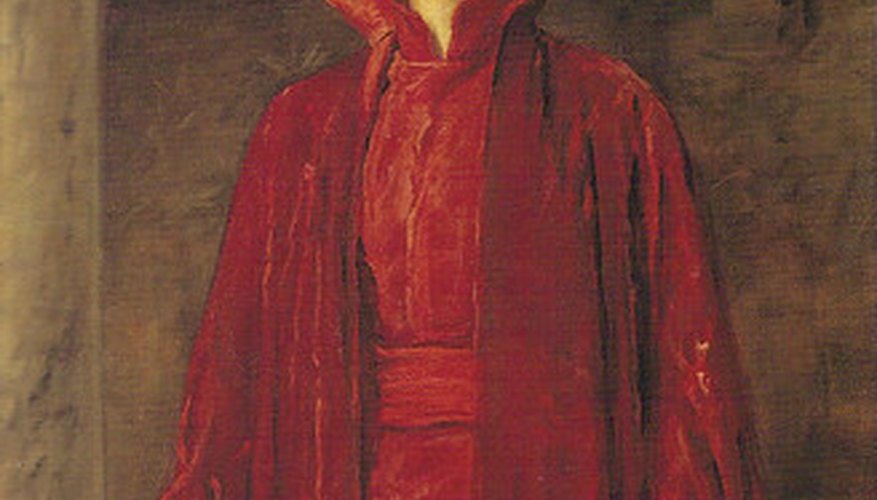The notion of cleanliness had a different meaning for the Elizabethans. During that period, when Queen Elizabeth ruled and Shakespeare wrote, personal hygiene as we practice it was virtually nonexistent.
Bathing
During Elizabethan times, baths were taken about once every couple of weeks by the wealthy and about three times a year for peasants. Washing of hands, wrists, face, teeth and feet were done on a daily basis, generally before a meal. It was considered unhealthy to wash hair often. Hair was styled with lard and lead powder.
- During Elizabethan times, baths were taken about once every couple of weeks by the wealthy and about three times a year for peasants.
- Washing of hands, wrists, face, teeth and feet were done on a daily basis, generally before a meal.
Make-up
Society women wore pale make-up to make their skin as white as possible and avoid the appearance of being in the sun. They caked lead-based powder on their face, neck, chest and hair and often bathed in wine or milk to improve skin complexion.
Smell
Due to the infrequency of bathing, perfumed candles, potpourri and perfume were used to mask offending odours. Wealthy women often carried small silver boxes called vinaigrettes, which contained perfumed sponges. The aristocracy used expensive soap during bathing, and affluent households made their own perfumed soaps to mask odours.
Sanitation
Running water was nonexistent during the Elizabethan Age, meaning there were no sewer systems. A chamber pot was used in wealthy homes, while lower-class homes most likely used an outhouse. Waste was usually disposed in a common cesspit. During the early morning, it was most likely thrown out the window on the street. Thus arose the noble notion that a man should walk on the outer part of the sidewalk when strolling with a woman.
- Running water was nonexistent during the Elizabethan Age, meaning there were no sewer systems.
- A chamber pot was used in wealthy homes, while lower-class homes most likely used an outhouse.
Diet
Poor diets consisting of sugary candy, which were favoured by the wealthy, resulted in rotten teeth. The wealthy feasted on a variety of meats and breads. The lower class subsisted on fish, cheese and bread. Both rich and poor alike ate few fruits and vegetables, resulting in a prevalence of scurvy.
- Poor diets consisting of sugary candy, which were favoured by the wealthy, resulted in rotten teeth.
- Both rich and poor alike ate few fruits and vegetables, resulting in a prevalence of scurvy.
